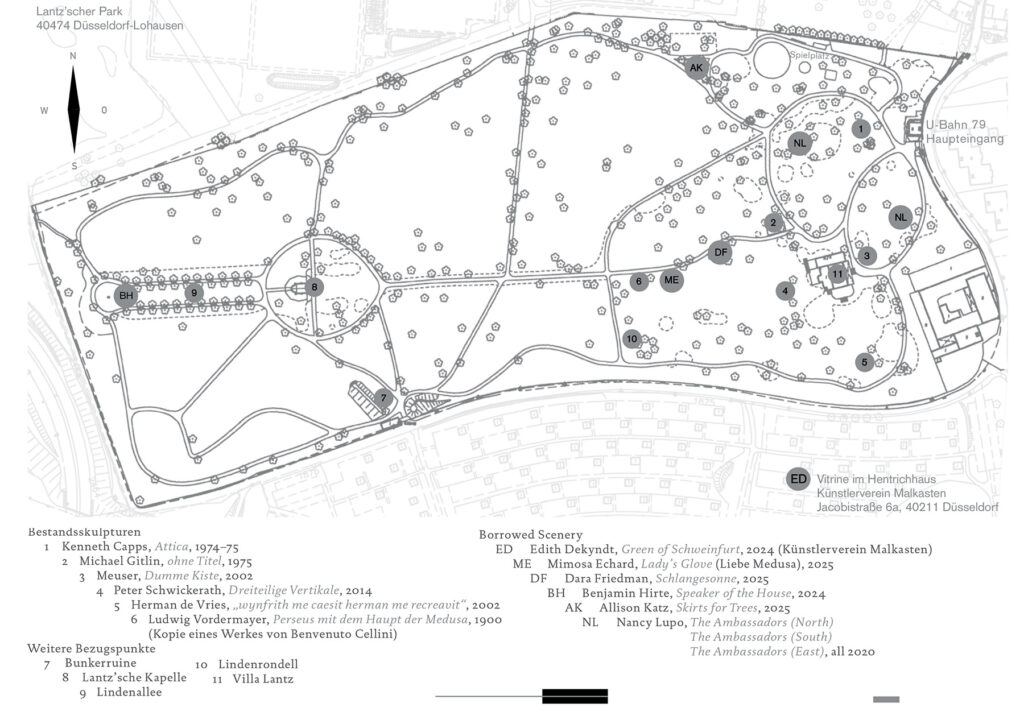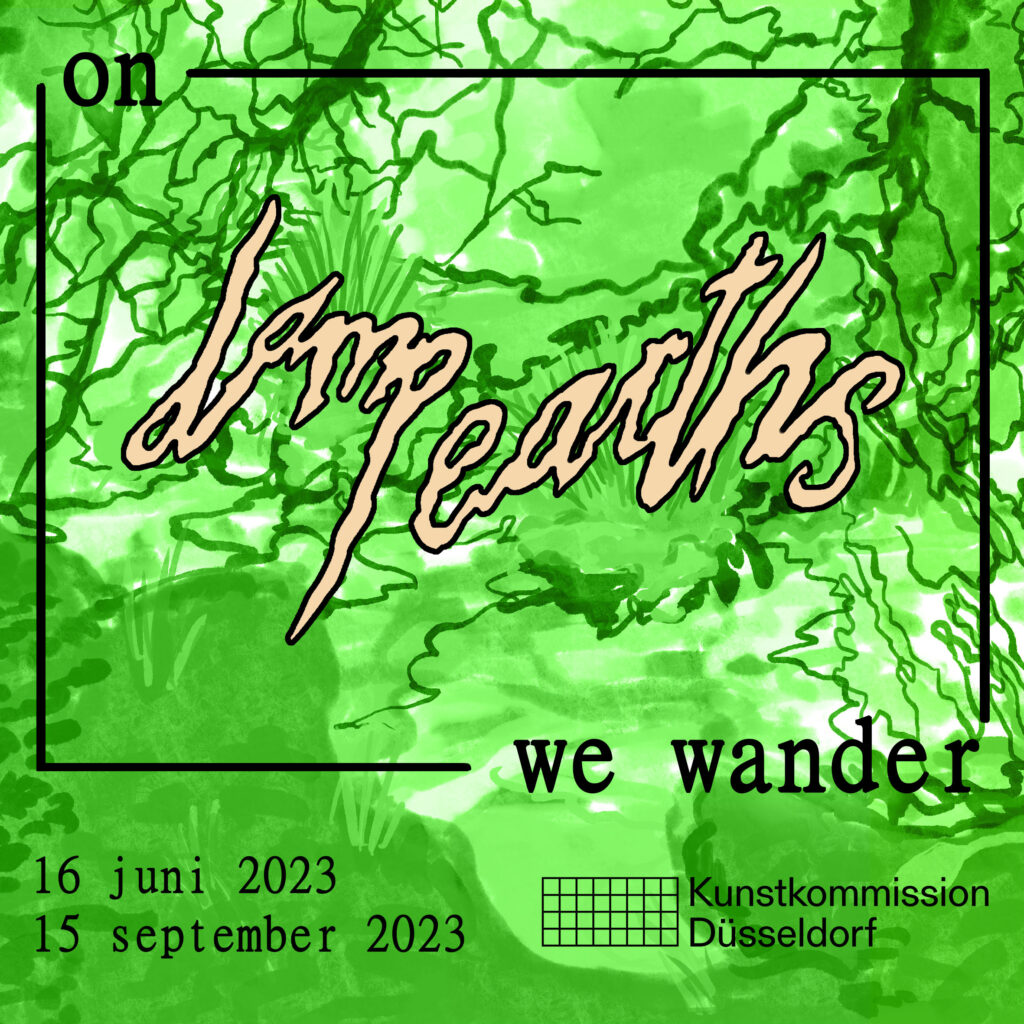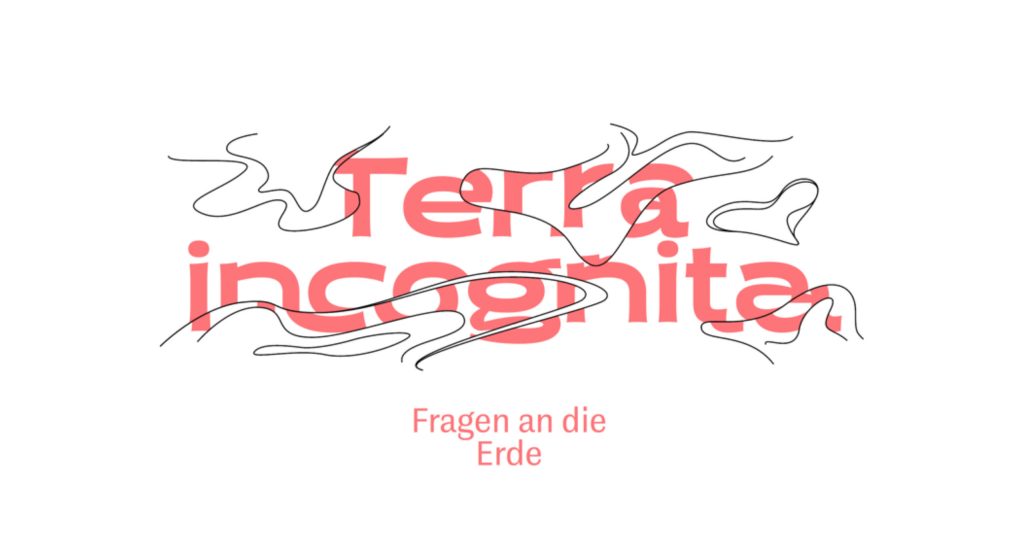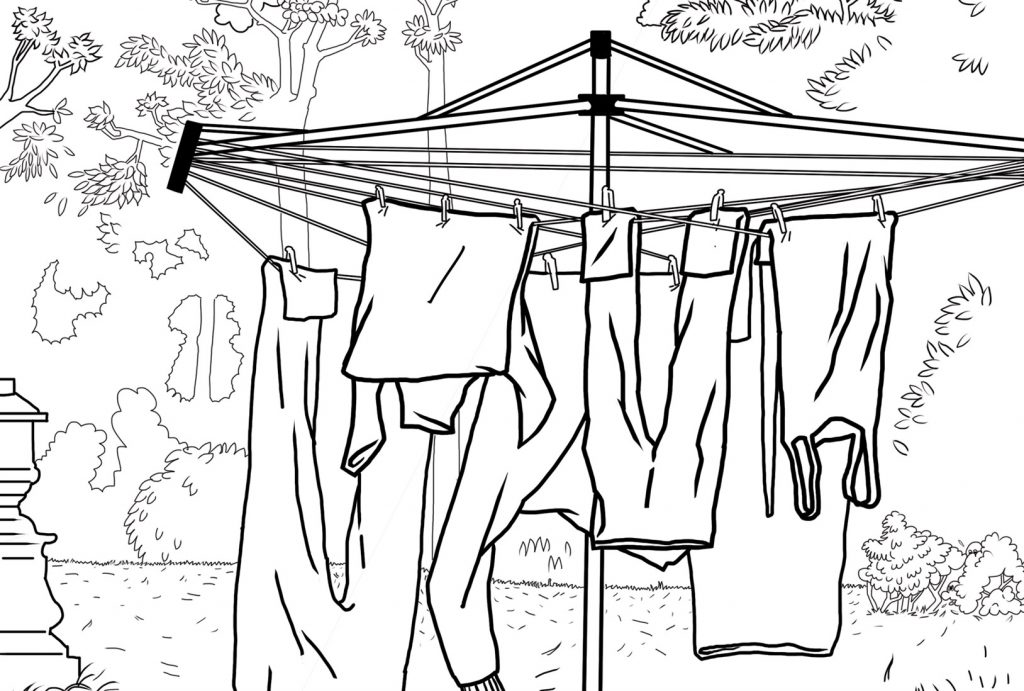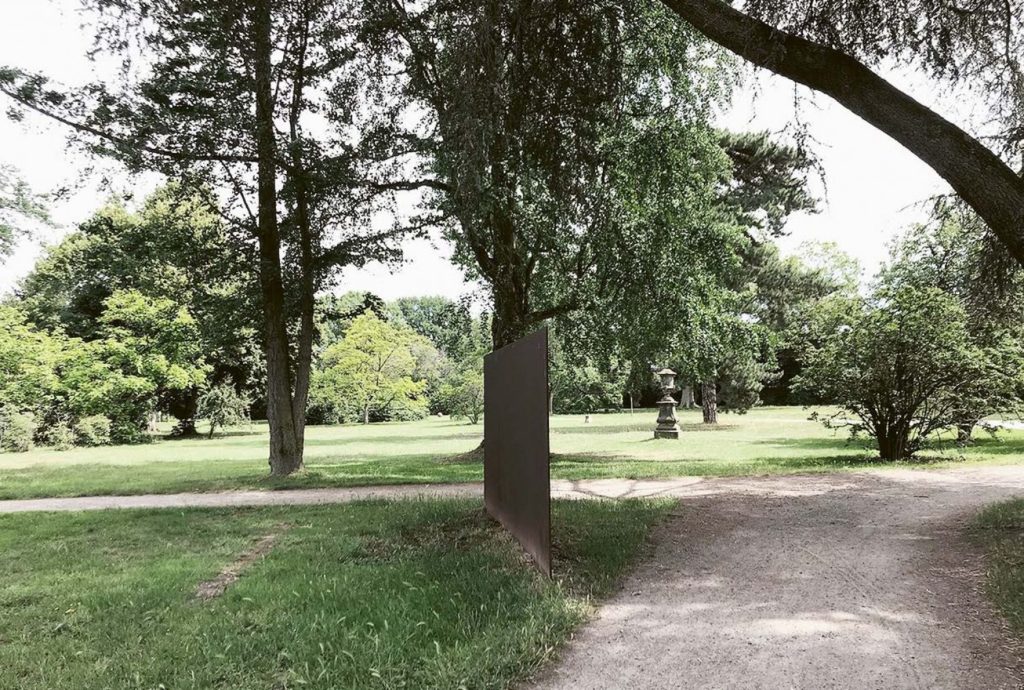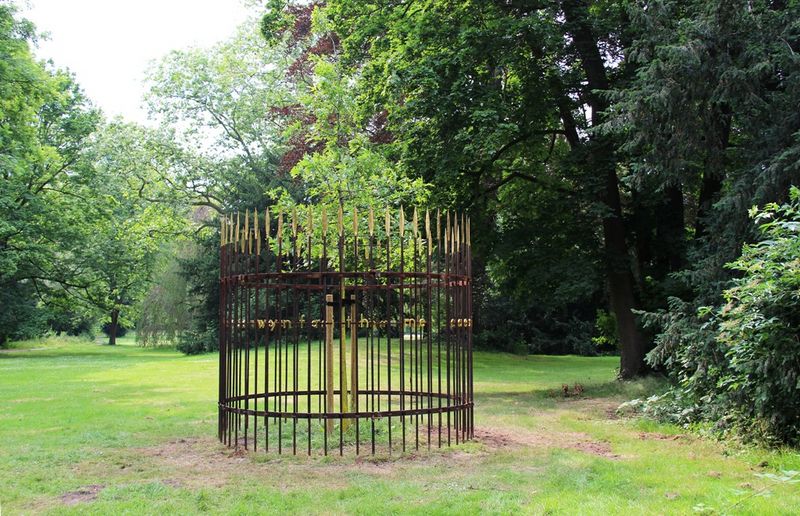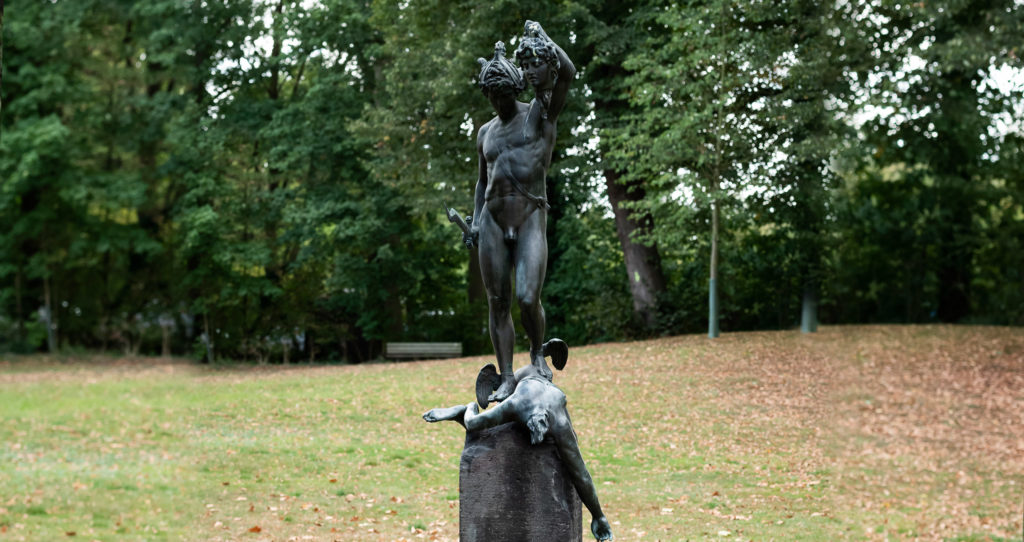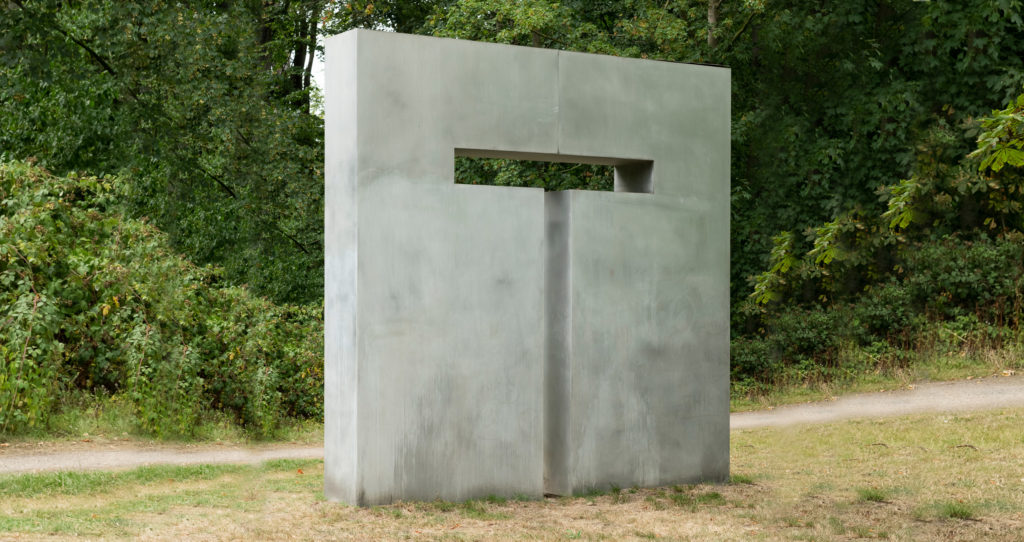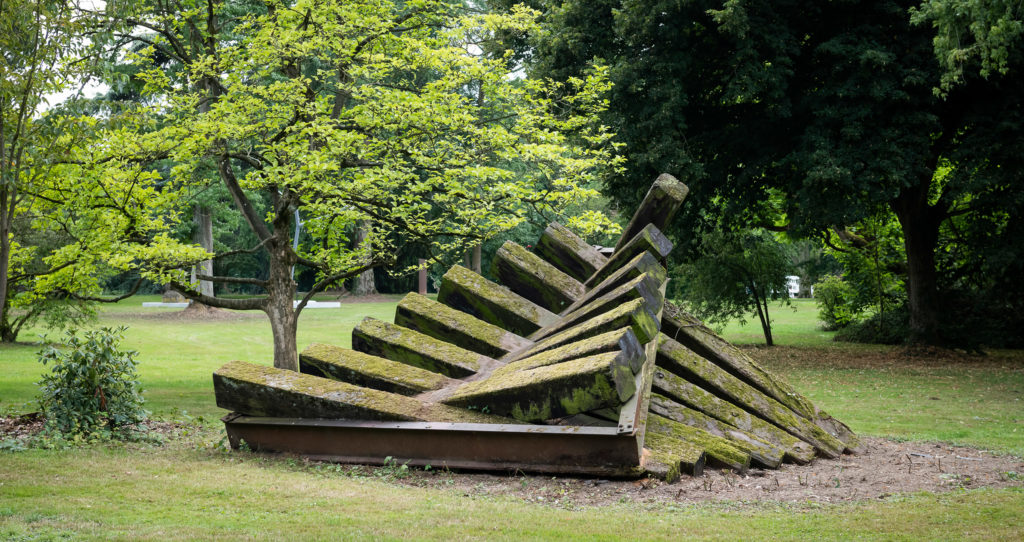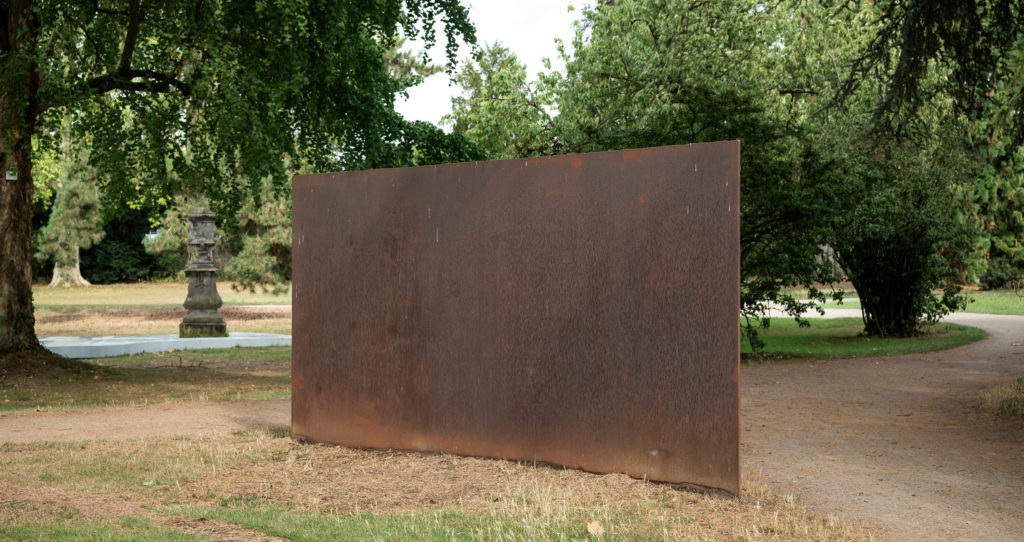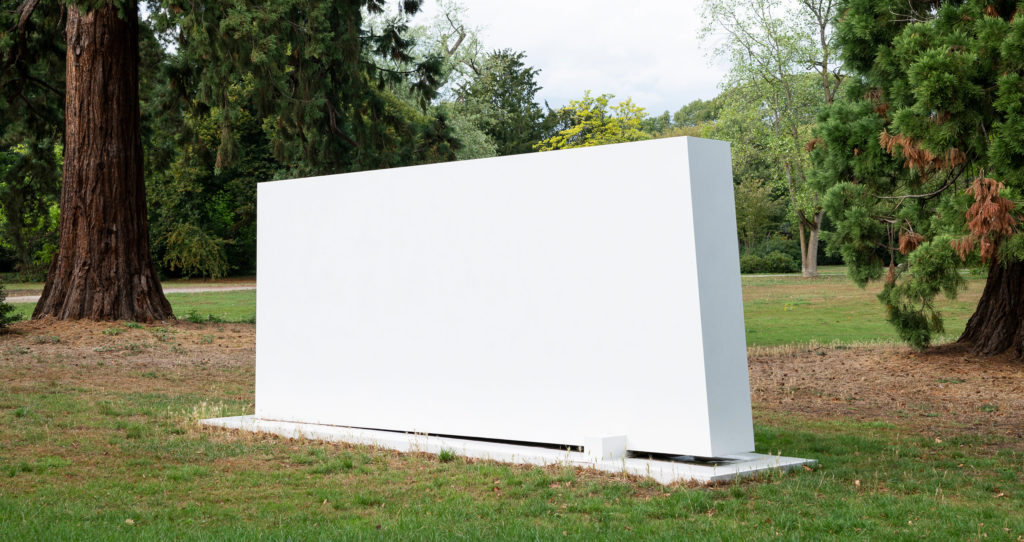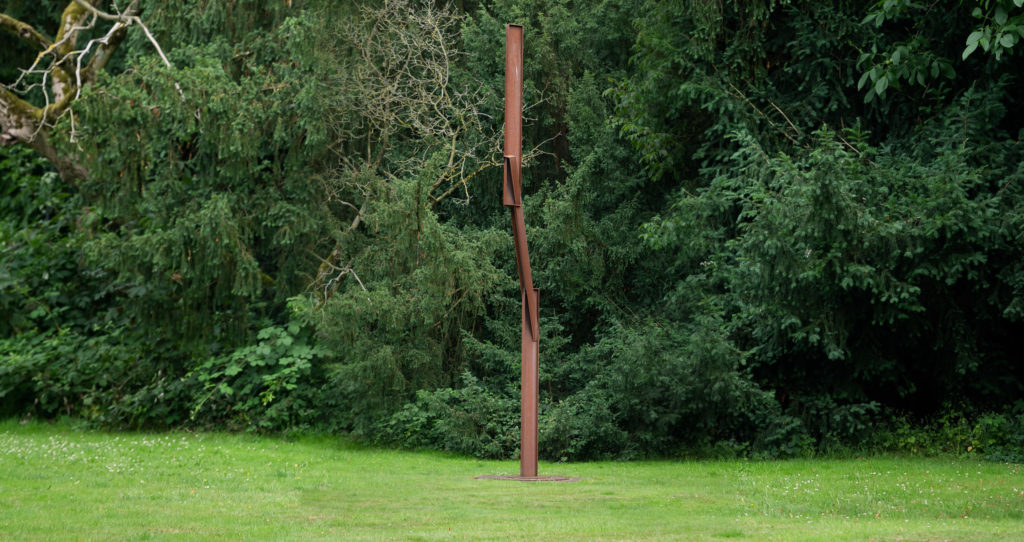Lantz’scher Skulpturenpark – das Konzept
Der Galerist Alfred Schmela (1918–1980) eröffnete 1975 im Herrenhaus des Lantz‘schen Parks seine „Galerie im Park“ und machte aus der 14,5 ha großen Grünanlage im Stadtteil Lohausen einen Skulpturenpark mit musealen Werken.
Auf Initiative von Gregor Jansen, Leiter der Kunsthalle Düsseldorf, wurde diese Idee mit dem „Lantz’schen Skulpturenpark Lohausen 2020“ wiederbelebt. Ein Mix von skulpturalen Positionen u.a. von Rita McBride, Bogomir Ecker, Martin Pfeifle und Chistian Odzuck sowie diversen künstlerischen Performances mit Tanz, Theater und Kochen fand hohen Zuspruch in der Bürgerschaft. Das von der Kunstkommission der Stadt Düsseldorf geförderte Projekt wird seitdem in einem jährlichen Rhythmus fortgeführt. Unter Verwendung eines maximal offenen Ansatzes und in Abstimmung mit der Kunstkommission werden kuratorische Konzepte entwickelt, die wiederum mittels Skulpturen und/oder performativen Ansätzen die Rolle von Kunst im öffentlichen Raum, Land Art und Happening untersuchen.
Nach dem sehr erfolgreichen Start in den letzten Jahren soll der Lantz`sche Park jährlich immer wieder erneut als Bühne für künstlerisch und gesellschaftlich aktuelle Positionen fungieren. Für 2025 konnte die Kuratorin Stephanie Seidel gewonnen werden.
Lantz’scher Skulpturenpark – das Konzept
Der Galerist Alfred Schmela (1918–1980) eröffnete 1975 im Herrenhaus des Lantz‘schen Parks seine „Galerie im Park“ und machte aus der 14,5 ha großen Grünanlage im Stadtteil Lohausen einen Skulpturenpark mit musealen Werken.
Auf Initiative von Gregor Jansen, Leiter der Kunsthalle Düsseldorf, wurde diese Idee mit dem „Lantz’schen Skulpturenpark Lohausen 2020“ wiederbelebt. Ein Mix von skulpturalen Positionen u.a. von Rita McBride, Bogomir Ecker, Martin Pfeifle und Chistian Odzuck sowie diversen künstlerischen Performances mit Tanz, Theater und Kochen fand hohen Zuspruch in der Bürgerschaft. Das von der Kunstkommission der Stadt Düsseldorf geförderte Projekt wird seitdem in einem jährlichen Rhythmus fortgeführt. Unter Verwendung eines maximal offenen Ansatzes und in Abstimmung mit der Kunstkommission werden kuratorische Konzepte entwickelt, die wiederum mittels Skulpturen und/oder performativen Ansätzen die Rolle von Kunst im öffentlichen Raum, Land Art und Happening untersuchen.
Nach dem sehr erfolgreichen Start in den letzten Jahren soll der Lantz`sche Park jährlich immer wieder erneut als Bühne für künstlerisch und gesellschaftlich aktuelle Positionen fungieren. Für 2025 konnte die Kuratorin Stephanie Seidel gewonnen werden.


